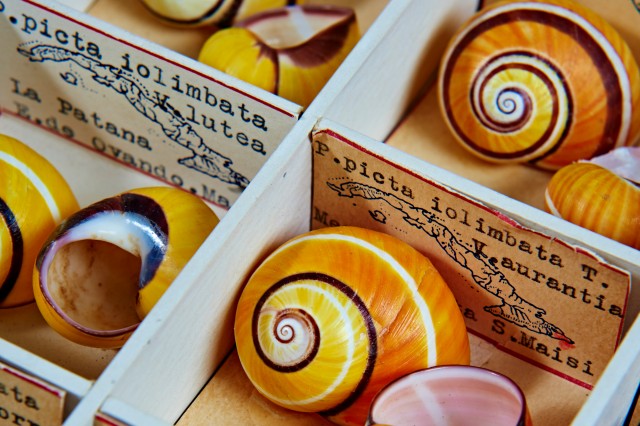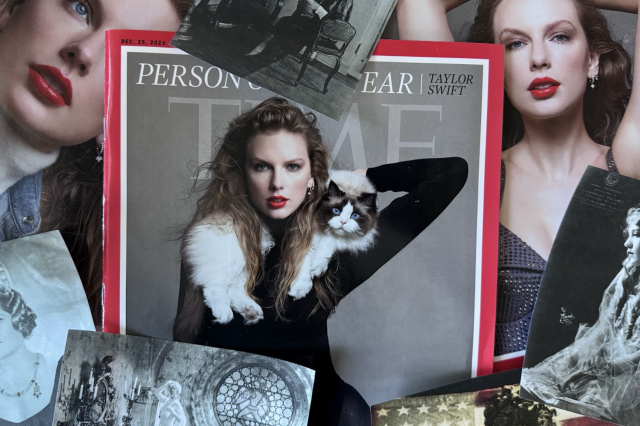What's in a species name?
Eponyms are scientific names for species that refer to people, but for mollusks, almost 90% of those people are men. Malacology Curator Jann Vendetti’s research explores the nepotism, sexism, and more behind the naming of species—and how we can do better.
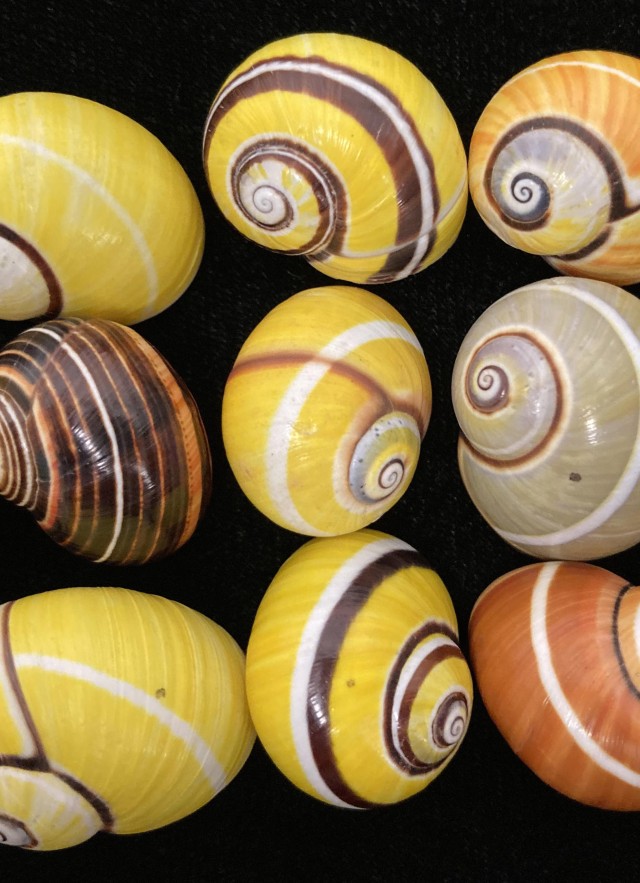
Published March 5, 2024
There’s a sponge named after Spongebob Squarepants (Spongiforma squarpantisii), a couple spiders and beetles named after Leonard DiCaprio, and dozens of species named after Sir David Attenborough. You may see a pattern starting to emerge from these namesakes. Whether fictional or real, they’re all male.
Jann Vendetti noticed this pattern too. In her role as the Twila Bratcher Chair in Malacological Research and Associate Curator of Malacology at NHM, she deals with countless species names while she studies snails, slugs, clams, octopuses, and other mollusks. After seeing a multitude of species named for men, suddenly she realized, “I've barely encountered any named after women.”
“I wondered if there was a pattern, and if I could quantify it," said Vendetti, “So I chose some species, made a spreadsheet, and recorded their etymologies; the results were pretty dramatic."
Vendetti analyzed 4,915 molluscan species from eight regions around the world and found that 12.5% were eponyms, or species that were named after people. Of those, a mere 10.6% were named after women.
In “Gender representation in molluscan eponyms: disparities and legacy” published in the American Malacological Bulletin, Vendetti describes how the names of many species unfortunately preserved a legacy of sexism and exclusion, memorializing for posterity the obstacles to women’s participation in malacology and other natural history research when these species were named.
“Women weren't naming species because they generally weren’t allowed to do taxonomy and systematics.” said Vendetti. “Therefore, men were really only mentors to other men. Because this group [women] had been excluded from these positions for so long, when a taxonomist was creating an eponym, there were few women [as scientists or mentors] to choose from. Thus, the sexism is baked in. In fact, if we wanted a proxy for women’s historic exclusion from natural history science, we could look at the scientific names of living things.”
Roots of Naming Conventions
Apart from a few guidelines (such as the frowned-upon practice of naming a species after oneself), scientists have considerable creative freedom when choosing a name. It’s an enviable opportunity to not only describe a new species, and introduce it into the scientific literature, but also decide what we forever after will call it. For many reasons, employing eponyms can be an attractive method to name a creature. It could honor a notable figure, as in the case of Attenborough, give credit to a person who helped find the new species, or celebrate a family member. And then there’s Carl Linneaus, the 18th century naturalist who devised the binomial nomenclature system we use to this day: he named thousands of plants and animals and invoked people’s names strategically, sometimes seeking vengeance. Famously, when Johann Siegesbeck criticized Linneaus for his naming practices, Linnaeus responded by naming a genus of a stinky, unattractive weed after him, dubbing it Sigesbeckia. Touché?
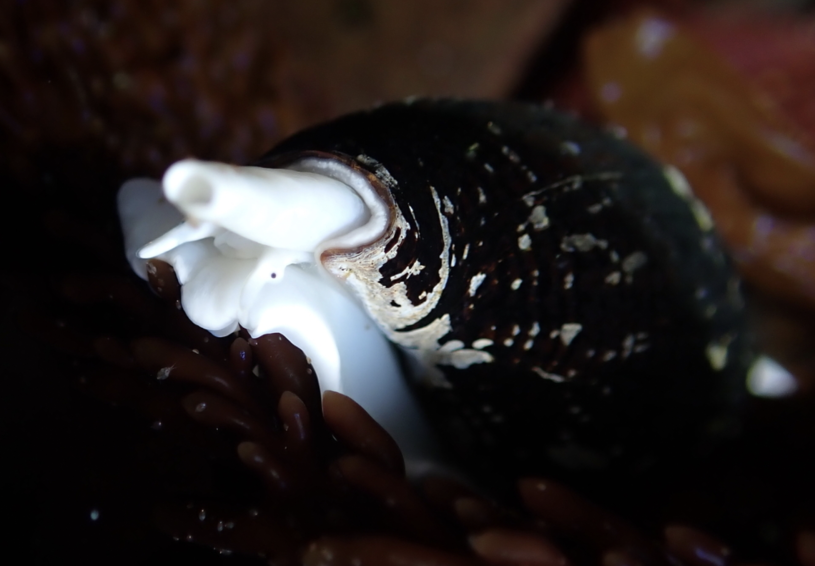
Another interesting discrepancy Vendetti found was the use of first or last names in eponyms. For women, 63.1% of the names utilized their first name (such as Atrimitra idae named for Ida Shepard Oldroyd), but a mere 4.6% of men’s first names informed the species name. This could have been an attempt to make it more obvious that the name honored a woman, or it could have been employed to account for the fact that women’s last names would change when they married. It’s also possible that the gender bias in names that still exists today, in which we are more likely to refer to men by their last names, was at play. And in some cases, the first name was used to differentiate between a husband-and-wife team.
“Many of the female eponyms of Southern California mollusks that I focused on for this paper were named after the wives of the male species describer. In several cases, their wives were also research associates, but since they couldn't receive advanced degrees, they weren't ever able to reach the rank of curator,” explained Vendetti. “So they were substantial contributors to the science, and they're honored by these names, but they aren’t species authors.”
If you have a system that is excluding a whole bunch of people, you won’t even be aware that your choices are exclusionary.
Strangely, in some instances, even when a species was meant to honor a woman, the masculine Latin suffixes would be used, seemingly as a means of protest. To get the nuance, a quick Latin lesson: Latin, like modern romance languages, has gendered nouns. The ending for a singular feminine noun is -ae, and for the masculine it’s -i. So when a naturalist named Gray (1800–1875) named a snail Assiminea francesiae for his sister Frances, he made sure to have it end in -ae. But as it was being published, a man named Joseph Goodall changed it from francesiae to francesii. And it wasn’t the first time Goodall did a last-minute switch to a species name upon publication to add a masculine suffix. Gray could only guess that Goodall “did not think it right that a shell should be named after a woman.”
Gender Asymmetry Lurks in the Latin
Similarly, in 1892 prominent malacologist William Healey Dall named a snail Vitrinella williamsoni (instead of V. williamsonae) for malacologist Martha Burton Williamson because, according to him, the surname Williamson was inherently masculine and that by naming the species V. williamsoni, “the usual genitive ending is preserved.”
Many people today assume the required ending for a species name, to give it its characteristic Latin flair, is -i. Not at all. It’s simply become so common to name species after men, and so uncommon to take Latin in school, that we have lost the thread and misunderstood the meaning of these words and made masculine the default.
In a hotly debated paper in Nature Ecology & Evolution, the authors drew a line in the sand with the title, “Eponyms have no place in 21st-century biological nomenclature,” citing the colonialism, racism, and sexism embedded in the names of African species. Many taxonomists in the scientific community balked, as they wanted to preserve the tradition of honoring collaborators, benefactors, or others who helped them in their work by naming a species in their honor. But without oversight and awareness, eponyms are at high risk of perpetuating the same inequalities. Even with noble reasons for using a person’s name, says Vendetti, “if you have a system that excludes a whole bunch of people, you might not even be aware that your choices and actions are exclusionary."
After all, there are plenty of other ways to name a species, as Vendetti outlines in a handy paper called, “Species name formation for zoologists: a pragmatic approach,” with coathor Robert Garland. They describe 10 different ways to name species with related Latin lessons for each, such as using its geographic location, descriptions like “of the forest,” adjectives, and more.
For Vendetti, the ideal species names describe an important element of the organism itself, such as where it lives or its notable features, such as the snail Polymita picta, so named because their bright shells appear to have been painted. Or Clanculus puniceus, a striking red snail named "puniceus" because it means scarlet in Latin.
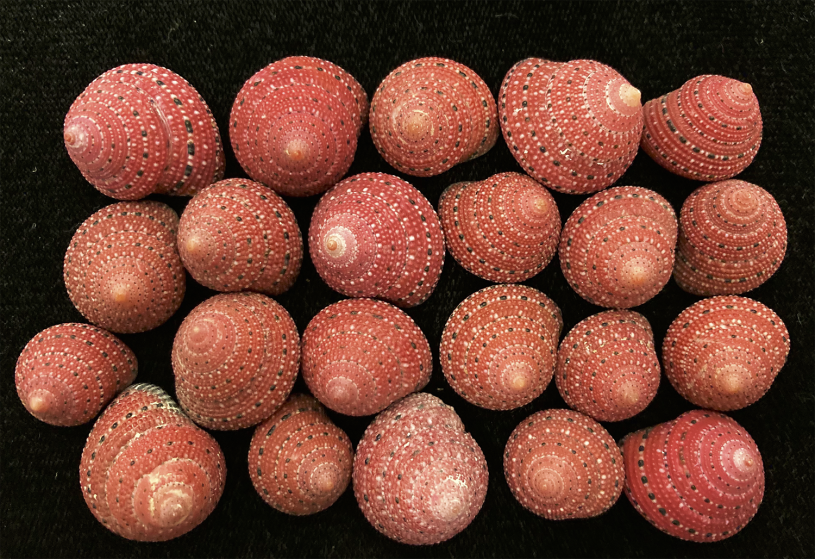
If she were to name a species today, Vendetti would be partial to the Latin singular, present, active participles, which can be used to describe something a species does, like in the species name Melanella micans, which means a snail that is twinkling. “It could be climbing, running, walking, crawling, glittering, sparkling, anything like that,” said Vendetii. “I would use something that honors the species itself in some way.”
Vendetti recalls being asked if a possible solution is an effort to name species after women from now on. “It's unlikely that the scales will be tipped,” she says, “even with millions of species yet to be described. The problem will probably never go away.”
Instead, efforts that welcome underrepresented groups into science could prove more effective. “When people don't see themselves represented in a field of science, naturally they can feel excluded,” Vendetti notes. Species names that overwhelmingly celebrate men are one of those cues. But armed with this knowledge, more can be done to lower these barriers and help people step safely over them. Even within the natural history field, the past does not always have to be precedent.
